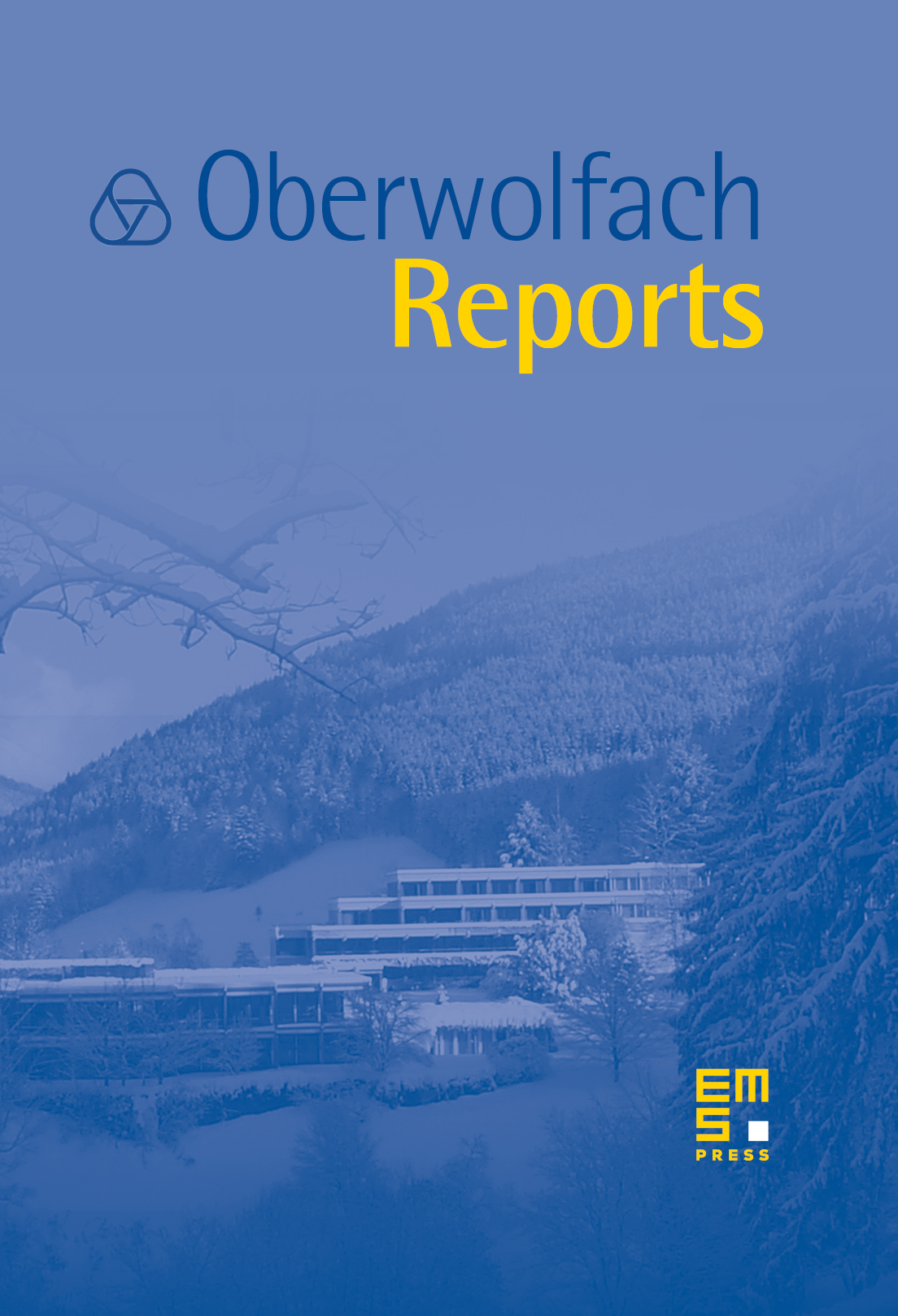Interplay of Analysis and Probability in Physics
Wolfgang König
Weierstrass Institut für Angewandte Analysis und Stochastik, Berlin, GermanyPeter Mörters
University of Bath, UKJohannes Zimmer
University of Bath, United Kingdom

Abstract
This workshop brought together researchers working in analysis and probability, stimulated an intensive exchange of ideas between the respective communities, and helped identify open problems at the boundaries and intersections of these areas.
Various approaches to scale-bridging were the main theme of the first day. Particular problems included the derivation of the thermal conductivity of a diffusion process from an atomistic model (Stefano Olla), the development of a coarse-graining technique to calculate canonical ensemble averages efficiently (Frédéric Legoll), and a potential-theoretic approach to the analysis of the transition from the metastable state to the stable state for a lattice gas under the Kawasaki dynamics (Anton Bovier). Jürgen Gärtner and Jean-Dominique Deuschel discussed a range of models interacting with a random disorder.
Spectral properties of large random matrices were in the focus of the morning session on Tuesday, in particular in the talks by László Erdős and Amir Dembo. The afternoon was devoted to pinning problems, both from the probabilistic view points for polymer models (Giambattista Giacomin and Hubert Lacoin), and martensitic materials with imperfections (Patrick Dondl).
Wednesday started with a review on recent progress of optimal transportation and gradient flows (Karl-Theordor Sturm). This was continued on Friday with a derivation of a particle model of the Ricci flow on a manifold (Robert Philipowski). Existence of Gibbs measures was another central theme of Wednesday. The existence and uniqueness of the Gibbs measure for point processes with a Hamiltonian depending on nearest-neighbour triples was investigated (Hans-Otto Georgii). A highlight of the conference was the analysis of lattice gradient models with non-convex interaction energy. Stefan Adams explained, using rigorous renormalisation group theory, that the free energy is convex for sufficiently low temperatures.
The talks of Thursday morning had scaling limits as one focus. This included a mean-field approach to clustering (Barbara Niethammer), the sharp interface limit of perturbed Allen–Cahn equations (Matthias Röger), and a detailed investigation of scaling limits of pinned random walks when the rate-function has a non-unique minimiser (Tadahisa Funaki). In the afternoon, Dirk Hundertmark presented the analysis of properties of soliton solutions for a nonlinear Schrödinger equation with relevance to dispersion management.
On Friday, the topic of systems interacting with a random disorder was taken up again, covering ageing in the parabolic Anderson model (Marcel Ortgiese) and an interface model with general potentials (Takao Nishikawa).
Besides the programme of altogether 25 talks of length between 30 and 45 minutes there was plenty of time for informal discussion and interaction between participants. This time was well-used with most discussions involving members of both the probability and analysis community. Beyond the mathematical discussion, several participants used the opportunity to discuss future collaborations in various international networks currently emerging in this area.
There were 40 participants in total, 16 from Germany, 16 from other European countries (Switzerland, Italy, Spain, France and Britain), 5 from the US and 3 from Japan. All career stages were represented.
The organisers thank the NSF for funding the participation of speakers from the US and Nadia Sidorova for collecting the extended abstracts.
Cite this article
Wolfgang König, Peter Mörters, Johannes Zimmer, Interplay of Analysis and Probability in Physics. Oberwolfach Rep. 5 (2008), no. 4, pp. 3065–3138
DOI 10.4171/OWR/2008/55